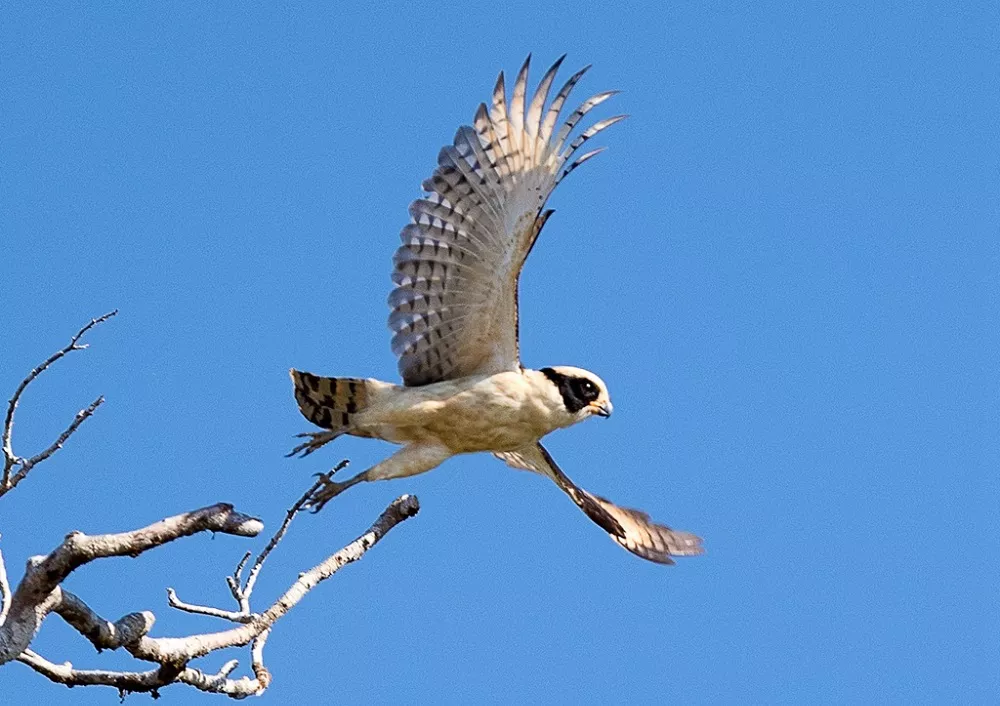The laughing falcon (Herpetotheres cachinnans) is a medium-sized bird of prey in the falcon family (Falconidae), the only member of the genus Herpetotheres. Distributed in Mexico, Brazil, Argentina and other countries in Latin America. Inhabits glades and forest edges in tropical forests. Feeds mainly on snakes. Captivity can live up to 14 years.
What does Laughing falcon look like
The laughing falcon has a pale cream or light-colored head, with black blobs around its owl-like eyes, giving it a mask-like face. The beak is thick and yellow. Wings are short, reaching only to the base of the tail feathers. The tail feathers are also pale cream in color with black stripes.
The adult laughing falcon is 46 to 56 cm (18 to 22 in) long and has a wingspan of 79 to 94 cm (31 to 37 in). As usual among birds of prey, the females are bigger, weighing 600 to 800 g ( 1.3 to 1.8 lb) compared to the males’ 410 to 680 g (0.90 to 1.50 lb). There is no obvious difference in size between the sexes, but the male has slightly longer tail feathers and slightly heavier body weight.
Laughing falcon habitat
It mainly inhabits tropical evergreen broad-leaved forests from sea level to 2,500 meters above sea level in the neotropical zone, glades in corridor forests and forest edges.
Laughing falcon living habit
- Diet: Feeds mainly on small snakes, occasionally lizards, bats, small rodents and fish. When preying, it flies down from the branch, pounces on the snake, grabs its occipital bone and cuts it off.
- Behavior: Except for mating season, Laughing Falcons are usually solitary and active at dawn and dusk. The same kind will communicate with each other by making noises similar to “laughing”.
Distribution area of Laughing falcon
It is found from both coastal slopes of Mexico through Central and South America south to the Peruvian Amazon and Bolivian Amazon region, practically all of Brazil, and northern Argentina and Paraguay.


 Facebook
Facebook  Instagram
Instagram  Youtube
Youtube 